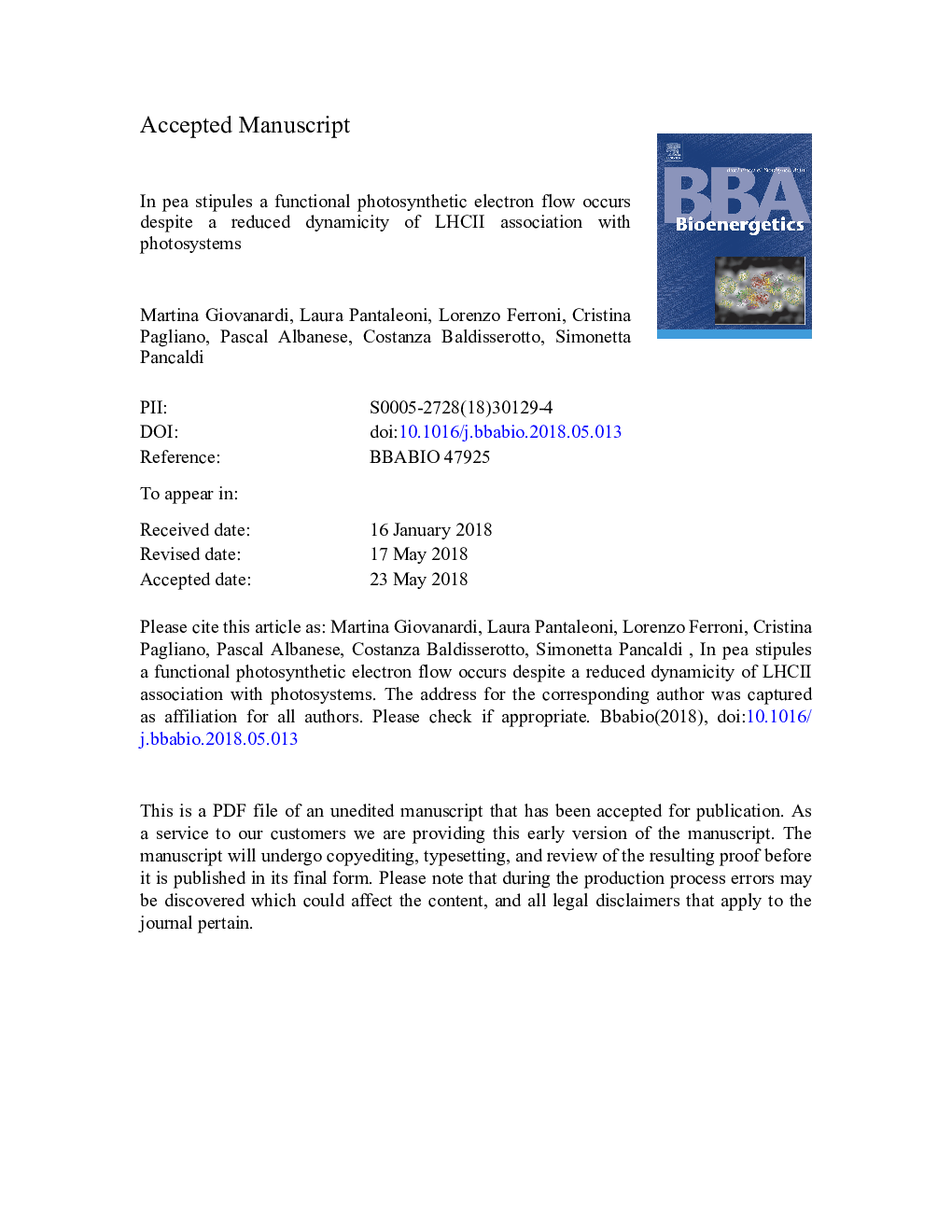| Article ID | Journal | Published Year | Pages | File Type |
|---|---|---|---|---|
| 8949235 | Biochimica et Biophysica Acta (BBA) - Bioenergetics | 2018 | 53 Pages |
Abstract
The flexible association of the light harvesting complex II (LHCII) to photosystem (PS) I and PSII to balance their excitation is a major short-term acclimation process of the thylakoid membrane, together with the thermal dissipation of excess absorbed energy, reflected in non-photochemical quenching of chlorophyll fluorescence (NPQ). In Pisum sativum, the leaf includes two main photosynthetic parts, the basal stipules and the leaflets. Since the stipules are less efficient in carbon fixation than leaflets, the adjustments of the thylakoid system, which safeguard the photosynthetic membrane against photodamage, were analysed. As compared to leaflets, the stipules experienced a decay in PSII photochemical activity. The supramolecular organization of photosystems in stipules showed a more conspicuous accumulation of large PSII-LHCII supercomplexes in the grana, but also a tendency to retain the PSI-LHCI-LHCII state transition complex and the PSI-LHCI-PSII-LHCII megacomplexes probably located at the interface between appressed and stroma-exposed membranes. As a consequence, stipules had a lower capacity to perform state transitions and the overall thylakoid architecture was less structurally flexible and ordered than in leaflets. Yet, stipules proved to be quite efficient in regulating the redox state of the electron transport chain and more capable of inducing NPQ than leaflets. It is proposed that, in spite of a relatively static thylakoid arrangement, LHCII interaction with both photosystems in megacomplexes can contribute to a regulated electron flow.
Keywords
Related Topics
Life Sciences
Agricultural and Biological Sciences
Plant Science
Authors
Martina Giovanardi, Laura Pantaleoni, Lorenzo Ferroni, Cristina Pagliano, Pascal Albanese, Costanza Baldisserotto, Simonetta Pancaldi,
